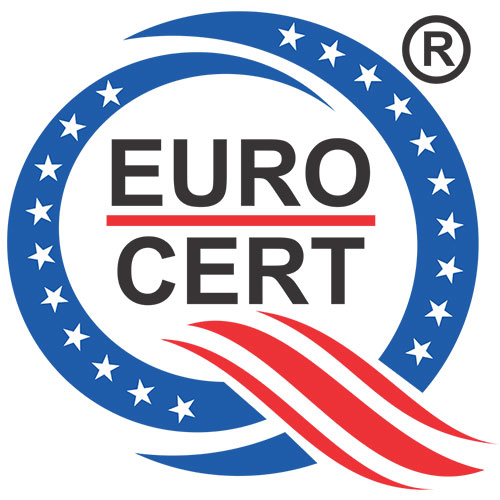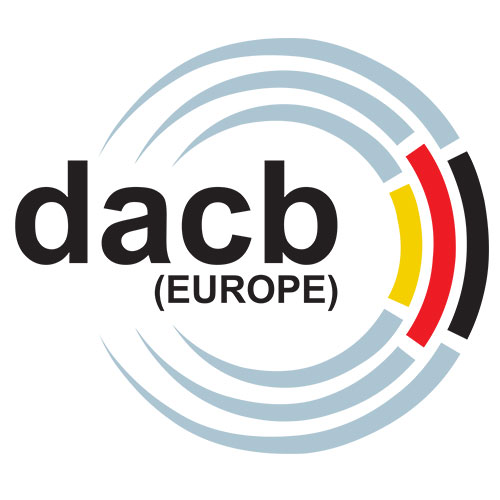ISO 13485:2016
BASIC INTRODUCTION OF ISO 13485
ISO 13485:2016 specifies requirements for a quality management system where an organization needs to demonstrate its ability to provide medical devices and related services that consistently meet customer and applicable regulatory requirements. Such organizations can be involved in one or more stages of the life-cycle, including design and development, production, storage and distribution, installation, or servicing of a medical device and design and development or provision of associated activities (e.g. technical support). ISO 13485:2016 can also be used by suppliers or external parties that provide product, including quality management system-related services to such organizations.
Requirements of ISO 13485:2016 are applicable to organizations regardless of their size and regardless of their type except where explicitly stated. Wherever requirements are specified as applying to medical devices, the requirements apply equally to associated services as supplied by the organization.
HOW TO USE ISO 13485 2016:
ISO 13485:2016 develops a quality management system for medical devices and related services and then use this system to:
- Show that your organization is consistently capable of providing medical device products and services that meet customer requirements and comply with all relevant & regulatory requirements.
- Assess your organization ability to consistently provide medical device products and services that meet customer requirements and comply with all relevant & regulatory requirements.
HISTORY OF ISO 13485:2016 MEDICAL DEVICES - QUALITY MANAGEMENT SYSTEMS
ISO 13485 Medical devices - Quality management systems -- Requirements for regulatory purposes is an International Organization for Standardization (ISO) standard published for the first time in 1996; it represents the requirements for a comprehensive quality management system for the design and manufacture of medical devices.
ISO 13485 is an international standard in the field of medical devices. Forerunners were the EN46001 standard which had to be combined with ISO 9001: 1994. ISO 13485:1996 was based on ISO 9001:1994. The current ISO 13485: 2016 is a single standard which is largely based on ISO 9001:2008.
ISO 13485, Medical devices – Quality management systems – Requirements for regulatory purposes, is an internationally agreed standard that sets out the requirements for a quality management system specific to the medical devices industry. It has recently been revised, with the new version published in March 2016.
ELEMENTS OF ISO 13485:2016
The key elements can be described as follows:
Clinical Evaluation
Assessment and analysis of clinical data pertaining to a medical device to verify the clinical safety and performance of the device when used as intended by the manufacturer
Labeling
Label, instructions for use, and any other information that is related to identification, technical description, intended purpose and proper use of the medical device, but excluding shipping documents
Medical Device Family
Group of medical devices manufactured by or for the same organization and having the same basic design and performance characteristics related to safety, intended use and function.
Sterile Barrier System
Minimum package that prevents ingress of microorganisms and allows aseptic presentation of the product at the point of use.
Sterile Medical Device
Medical device intended to meet the requirements for sterility
Medical Device File
For each medical device type or medical device family, the organization shall establish and maintain one or more files either containing or referencing documents generated to demonstrate conformity to the requirement of this International Standard and compliance with applicable regulatory requirements.
Work Environment
The organization shall document the requirements for the work environment needed to achieve conformity to product requirements.
If the conditions for the work environment can have an adverse effect on product quality, the organization shall document the requirements for the work environment and the procedures to monitor & control the work environment.
Contamination Control
As appropriate, the organization shall plan and document arrangements for the control of contaminated or potentially contaminated product in order to prevent contamination of the work environment, personnel or product.
For sterile medical devices, the organization shall document requirements for control of contamination with microorganisms or particulate matter and maintain the required cleanliness during assembly or packaging processes.
Planning of Product Realization
Plan and develop the processes needed for product realization. Planning of product realization shall be consistent with the requirements of the other processes of the quality management system.
Design & Development
Plan and control the design and development of product. As appropriate, design and development planning documents shall be maintained and updated as the design and development progresses.
Cleanliness of Product
Document requirements for cleanliness of product or contamination control of product if:
- Product is cleaned by the organization prior to sterilization or its use;
- Product is supplied non-sterile and is to be subjected to a cleaning process prior to sterilization or its use;
- Product cannot be cleaned prior to sterilization or its use, and its cleanliness is of significance in use;
- Product is supplied to be used non-sterile, and its cleanliness is of significance in use;
- Process agents are to be removed from product during manufacture
OBJECTIVE SAMPLE OF ISO 13485
The objectives should be designed to be S.M.A.R.T (specific, measurable, achievable, realistic and time-based).
Examples of MD-QMS Objectives:
- Requirement compliance rate
- Complaint Corrective Action Closure Time
- Reduction of internal waste
- Improvement of productivity rate
- Increase the client satisfactory level (x to y)
- On-time delivery %
- To increase the rate of on-time delivery by 5% in the next 12 months.
- To decrease the rate of defective product shipped to customers by 1% in the next 12 months
WHAT IS THE PROCEDURE OF ISO 13485:2016 CERTIFICATION
The Certification process shall consist of the following key stages :-
- Application Review & Contract Review
- Initial Certification Audit: Stage-1 & Stage 2 Audit
- Certification Decision
- Continual Assessment (Surveillance Audit)
- Renewal Audit
- Suspending, Withdrawing, Extending or Reducing Scope of Certification
Client Side Documents Requirement
With the right preparation and a good understanding of what is required for ISO 13485 Certification, Some documentation needed ready for Certification Process. The documentation will define:
- MD-QMS Manual
- Organisation Structure
- Who should record information and what information is recorded
- Responsibilities of Employees
- Internal Audit & Management Review Meeting
- Policy & Objective
- Technical File - Medical Device File (FDF)
- Sterilization Process & Validation Process
- Documented Work Instruction - SOP
- Documented Procedures
BENEFITS OF ISO 13485:2016
- Guarantees high quality of provided services and products
- Reduces production loss rate
- Reduces operational costs and reduces risk
- Increases effectiveness across the whole organization
- Increases your customers trust in you as a safe supplier or producer
- Identify and develop a quality management system for medical devices
- Utilize the quality systems and control processes for medical devices
- Monitor and maintain quality management system for medical devices
- Increase efficiency, cut costs and monitor supply chain performance
- Meet regulatory requirements and customer expectations
- Demonstrate that you produce safer and more effective medical devices
ROAD MAP FOR ISO 13485:2016
Roadmap and plan for ISO 14001 Covering key Points:
UNDERSTANDING
Training on Standard Requirement Organizations needs to have the knowledge, skills and capability to support a standard beyond the certification audit.
PREPARE
GAP Analysis: We do gap analysis & risk analysis to identify what you do and what ISO 13485 recommends to do, it may be process addition or modification to adopt International Best Practices
IMPLEMENT
System Document Development: Based on the training the client reviews their own management system and evaluates their existing policies and procedures and modifies them to comply with the best practice.
Internal Auditor: Training Regular internal audits against the system are the requirements of the standard.
REVIEW
Standard Implementation: Client must ensure that their employees are adopting the new protocols and procedures inline of the standards.
Internal Audit: Client conducts an internal audit of their management system implementation. They must examine their own processes and procedures in terms of effectiveness.
Management Review: Client to discuss the future of their management system with their senior management about the strengths and weakness of the system to identify areas for continual improvement
ASSESS
Pre-Assessment:A pre-assessment audit done prior to and outside the formal scope of certification to identify area that need more work whilst also preparing key employees for the eventual audits. A useful audit to rehearse ,align and de-bug your system:
Stage 1 - Assessment:Document Review
Stage 2 - Assessment:Run through of the implemented systems.
PROMOTE
Certification Issue Certification Issue
CONTINUING ASSESSMENT
Continuing assessment Visit
A routine surveillance visit which every year or 12 months cycle over a three year period to monitor and evaluate continuing systems performance.
Re-assessment
Re certification of your management system is required every three years after the initial certification and covers a comprehensive review of the whole system. It may include an additional stage 1 review where significant problems have been encountered during the course of the certification cycle.
APPLY FOR ISO 13485:2016 CERTIFICATION
Contact Us: If you plan to go for ISO Certification, you may ask for Quotation by providing your organization’s information in application form, you can download the inquiry form available at the website or submit your inquiry through feedback. Alternatively you may send your inquiry through mail to info@eurocertindia.com or call us at Mob: +91-9769903178
WHAT IS THE COST OF ISO 13485:2016
Charges for ISO 13485:2016 Certification may depend on the size, location, Complexity of operation, Processes and it’s inter relevance. Eurocert produces a guidance price list based on company nature & size. For a Quotation please get in touch with us either by sending your inquiry through mail to info@eurocertindia.com or call us at Mob: +91-9769903178
INTEGRATION OF ISO 13485:2016 WITH OTHER STANDARD
An integrated management system (IMS) combines all related components of a business into one system for easier management and operations. Quality, Environmental, and Safety management systems are often combined and managed as an IMS.
Integrated Management System (IMS) integrates all of an organization’s systems and processes in to one complete framework, enabling an organization to work as a single unit with unified objectives.
- INTEGRATED MANAGEMENT SYSTEM (IMS) with ISO 13485:2016 + ISO 9001 :2015
- INTEGRATED MANAGEMENT SYSTEM (IMS) with ISO 13485:2016 + ISO 14001:2015
- INTEGRATED MANAGEMENT SYSTEM (IMS) with ISO 13485:2016 + ISO 45001 :2018
- INTEGRATED MANAGEMENT SYSTEM (IMS) with ISO 13485:2016 + ISO 22000:2018
- INTEGRATED MANAGEMENT SYSTEM (IMS) with ISO 13485:2016 + ISO 27001:2013
- INTEGRATED MANAGEMENT SYSTEM (IMS) with ISO 13485:2016 + ISO 50001:2018
BENEFITS OF INTEGRATED MANAGEMENT SYSTEM (IMS)
- All integrated Standards have a document control requirement
- Meeting all standards’ requirements with one set of policies and procedures
- Increased efficiency and effectiveness.
- Reductions in costs associated with audits.
- Displays commitment to continuous improvement for the organisation as a whole.
- Presents a clear uniform image of the whole organisation.
- Reduces duplication, bureaucracy and maximises Resources.
- Increases time available to management to implement proactive measures.
- Improves internal and external communications.
- The control of records is specified in all three
- Training, competence and awareness is seen in all three
- All three have a requirement for internal auditing
- Management review is seen as critical for all three
- Standards Monitoring and measuring devices are referred to in each
- Continual improvement is key to all three
- Corrective and Preventative Action are major requirements
LIST OF ISO 13485 SERIES STANDARD
ISO 13485:2003 - Medical devices - Quality management systems
Requirements for Regulatory Purposes
ISO 13485:2012 - Medical devices - Quality management systems
Requirements for Regulatory Purposes
ISO 13485:2016 - Medical devices - Quality management systems
Requirements for Regulatory Purposes
Accreditation


